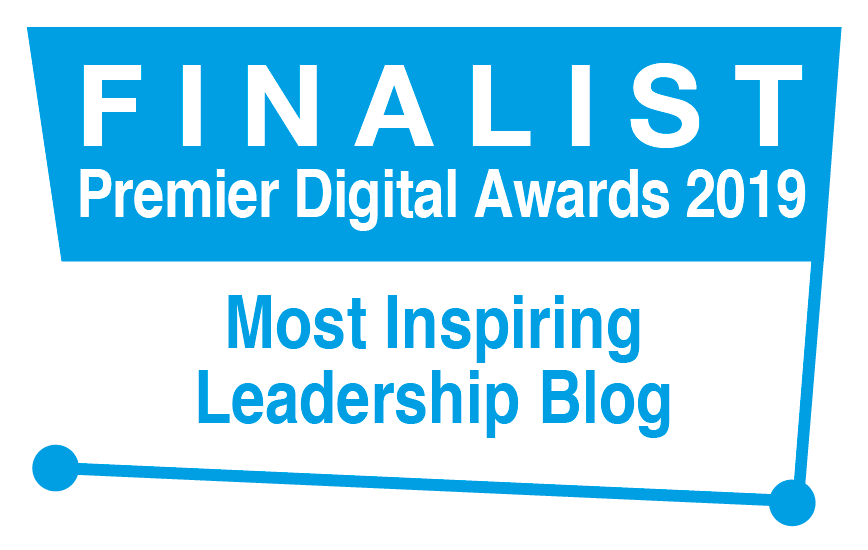|
‘It is not power that corrupts but fear. Fear of losing power corrupts those who wield it and fear of the scourge of power corrupts those who are subject to it.’ (Aung San Suu Kyi) I ran a 3-day workshop in the Philippines for students who were about to graduate from a university for the poor. As we talked about their role and career aspirations for the future, I invited them to do role-plays that would, I thought, enable them to prepare for interviews and increase their chances of success. They smiled, albeit kindly, at my naivety. In role play after role play, with typical Filipino creativity and playfulness, the students depicted scenarios in which getting a job had nothing to do with personal merit and everything to do with whom the applicant knows or is connected to, and what level of contribution for expenses (bribe) the applicant is willing and able to pay to those conducting the interviews and making the appointment decisions. I felt astonished and depressed. Endemic corruption saps the life and energy out of people and societies and deprives them of so much talent and potential. I was intrigued to explore this further so asked the students how much money they would need to pay to get a job. They responded that such forms of corruption are culturally-coded euphemistically so that, in effect, everyone knows what game is being played without anyone explicitly admitting it. For instance, if a student were to be invited to an interview at 2.00pm, it means they will need to pay 20k pesos. If at 4.00pm, then 40k pesos. If they don’t turn up with the required cash, or are not connected to a suitable sponsor, they will be offered a post-rationalisation (excuse) for their apparent failure. This encounter was certainly an eye-opener for me. We moved on to look at other ways in which corruption manifests itself in societies around the world; e.g. in payment of financial incentives (backhanders) to secure specific political policies, judicial outcomes or commercial contracts. Media manipulation, attacks on press freedom, silencing of political opponents, undermining of democratic structures and civil society, monopolisation of markets: all undermine social and economic accountability and opportunity. The biggest challenge when corruption becomes thoroughly pervasive is where and to whom to go to address it. Speaking truth to ourselves can be hard enough to endure. Speaking truth to power can lead to alienation…or to a bullet.
10 Comments
‘You could start a fight in an empty room, mate.’ (Allan Jones) I’ve never sought conflict. Far from it. I much prefer harmony and peace. That said, however, I can’t escape a similar calling to that which Martin Luther King once heard: ‘Stand up for righteousness! Stand up for justice! Stand up for truth!’ It’s a call that burns deeply inside of me and has done, as far as I can remember it, for my entire life. I’m pained to admit that I haven’t always followed that voice anywhere near as courageously as MLK. I haven’t always handled it with his astonishing humility and love. I’ve stayed silent when I should have spoken up or spoken up when I should have stayed silent. My words have stumbled out clumsily. I’ve caused pain where I meant to bring healing and hope. Yet, at times, this vocational stance has proved authentic, valuable and worthwhile. In my 30s, I worked for a large UK charity in the health and social care sector. As an idealistic young radical, I challenged the leadership team on numerous occasions when I believed we were compromising our values. I tried to do this with prayer and humility and out of a genuine desire to build relationship and trust. On one occasion, the leadership team decided, in view of limited budget, to increase only senior leadership salaries until it had secured sufficient funding to increase frontline staff salaries too. I argued vociferously that we should do the exact opposite – and to freeze my own salary as a first step. On another occasion, the leadership team decided to reserve all spaces in its small head office car park for executives only, given that they didn’t have time to drive around to look for parking places elsewhere. I advocated passionately that, especially in the winter months, the spaces should be reserved for female and other vulnerable staff or visitors so that they wouldn’t have to walk along dark city streets at night to their cars. On yet another occasion, the leadership team recruited a ‘hatchet man’ on temporary contract to implement a tough restructure with associated redundancies. I protested that this blunt way of approaching the change would damage relationships, engagement and trust. At times, I imagined my challenges and counter-proposals were met with deafening silence or heavy sighs – especially as I wasn’t a senior leader at the time. Nevertheless, when a serious crisis broke out between the leadership team and entire middle management, both sides to the conflict invited me to mediate as ‘the only person they could trust’. The chief executive, a man of remarkable humility, took me into his confidence and treated me like a respected thought-partner. When I moved on, the company secretary wrote to me to say he had never encountered such integrity. Even the dreaded ‘hatchet man’ wrote that he wouldn’t hesitate to employ me alongside him in any future role. Pray with humility – take a stance – speak the truth in love. ‘If you want to know what your true values are, have a look at your diary and your bank statement.’ (Selwyn Hughes) Take any example of an important-to-you decision that you have taken during this past week. Consciously or subconsciously, directly or indirectly, it will have reflected something of your underlying beliefs and values. At one level, every decision we take with awareness represents the outcome of a choice point, analogous to a choice of a direction at an intersection in a road. Guiding principles are a way of choosing to align our decisions and behaviour with our beliefs, ethics and values. I worked with a group recently where, during feedback, participants commented on how they felt impacted by what they saw and experienced as my ‘distinctive’ style and approach. They were curious and asked me what, if anything, lay behind this – that which they had experienced – for me. What is it that makes the difference? I held up a small, yellow, post-it note to the screen. On it are written 3 words in my own scrawled handwriting: Prayer, Presence, Participation. These are, if you like, the guiding principles that underpin me personally and all of my work professionally. I carry them with me and have them stuck on my desk, beside the monitor. I pause and focus on them consciously and deliberately before, say, writing a message, joining a conversation or running a workshop. They really do matter to me. Prayer is inviting and opening myself to God’s insight, wisdom and power. He is able to reveal, do and achieve things that are truly impossible for me alone. Presence is ensuring quality of attention and contact with each person or group that I will meet. It’s viewing and approaching each person, each moment, as a sacred encounter. Participation is an invitational spirit that calls for humility and courage. It means engaging with people, not simply technology or any materials that we may use. At the end of the conversation, I invited each person in the group to reflect for a moment – for as long as they needed – and to write down 3 words that, perhaps, they would choose to underpin their own practice. They did this thoughtfully, alone, then each shared with others in the group what they had written. This felt so much deeper and more meaningful than simple words on paper could capture or convey. It was about integrity, authenticity and congruence: choosing to take a stance. What core principles guide the focus and parameters of your decisions and behaviour? What stance are you willing to take? ‘If you don’t stick to your values when they’re being tested, they’re not your values.’ (Jon Stewart)
We sometimes discover what our values are when someone behaves, or something happens, that cuts sharply across them. It can be like a glass filled with liquid that gets knocked. We find out what’s inside when we see what spills out. At times, we’re surprised to find that our true values are quite different to those we espouse or identify with rationally. We don’t just think values. We feel them. Gut level, heart-wrenching feeling. If you don’t feel it when challenged or experiencing a clash, it doesn’t matter enough to you. If in doubt, shake the tree, see what falls and feel it land. Impact. I was sitting in an awkward circle during a coaching workshop. It was one of those activities where a group is placed in a room with no instructions and no guidance, to see what emerges. I felt curious as a conversation gradually unfolded… until, that is, a forceful-sounding man assumed the role of leader and put down a shy-looking woman sitting opposite me. Without thinking, I leapt straight to her defence and challenged the power figure, as if the woman needed saving. The group remarked later on my response – and that’s when I became aware of Stephen Karpman’s Drama Triangle. It wasn’t a rationale that had triggered me but a behaviour that crossed a deeply-held value. That was some years ago now and, although I no longer default to rescue mode, it helps in part to explain why so much of my life and career have been dedicated to international development, advocacy and relief work. I’m a follower of Jesus, I hate that the poor are so vulnerable and I want my life to make a difference. What gets you up in the morning or keeps you awake at night? What are your true values, and how do you know? If push comes to shove, what are the lines that you will not cross? ‘I don’t believe in riches, but you should see where I live.’ (U2) My house is made of cardboard. It’s called a new-build, but the ‘build’ bit has to be taken with a very large pinch of salt. If you cough outside, the walls shake. Cold air howls through the double-glazing, conveniently blowing the dust off the curtains. Cracks decorate the walls and door frames in elegant postmodern style and the slightest of sounds travels through everything. The builders on-site blare out music daily, with a thumping bass so loud that many nightclubs would envy it. They drive heavy machinery persistently so very close to the house that everything – and I mean, everything – shudders. The room lights flash on and off like a delinquent strobe as they go past. My alarm clock travelled 18cm across the window ledge and turned to face the opposite direction. ‘It’s just the house settling; nothing to worry about.’ There are tyre tracks across my front lawn. The workers are completely and utterly impervious to feedback, as if specially trained to not-hear. Best and worst of all, there are ‘Considerate Constructors Scheme’ posters displayed (or ripped down by angry locals) all over the site. If you ask me, that’s the rich icing on the metaphorical moving-in cake. It makes a painfully ironic joke out of corporate core values. As I heard one brand expert say, ‘If you don’t live out your values, they’re not worth a flying f***’. I might have said, ‘…the paper they’re written on’, but hey – she might have had a rough time with builders too. Here’s the thing: Values matter. They’re about truth, integrity and trust. Bottom line: Make it real. Actions speak louder than intentions or words. Do you need help with discovering, creating or living your core values? Get in touch! What do you really believe? It’s sometimes hard to know. We can believe something absolutely, with real passion and conviction, and yet act completely differently. The really weird thing is that we can convince ourselves that we’re living consistently with what we believe and yet the behavioural evidence, the decisions we take, the time and energy and resources we spend on people and things, can tell a very different story. Our human ability to deceive ourselves is quite remarkable.
Against this backdrop, words like integrity, genuineness, authenticity and congruence spring to mind as a stark contrast, posing a powerful and deep challenge to who we are and how we conduct ourselves in the world. We tend to think of these words as inner qualities, personal attributes, the idea of someone walking their personal talk whether anyone notices it or not. Yet they are often formed, outworked and sustained in the context of complex situations and relationships. In this sense, we could consider the integrity phenomenon as having social and cultural as well as personal dimensions. It’s about the individual but it’s not only about the individual. So we can ask: Who best models integrity for us? If we live seek to live with integrity in all aspects of our lives, what impact and influence does that have on those around us? What cultural beliefs and values nurture and support it? What social conditions provoke and inspire it, often against all the odds? What does this mean for leaders, OD and coaches? Here are some ideas: 1. Clarify our beliefs and values: what matters most to us? 2. Invite people to support and challenge us when we risk dissonance, self-deception or slip up on route. 3. Model, inspire, support and affirm integrity in behaviour, relationships, decision-making and culture. 4. Support and challenge, not collude, when working with clients. 5. Love, honour –and forgive – when we and others get it wrong. How would you describe your coaching style? What questions would you bring to a client situation?
In my experience, it depends on a whole range of factors including the client, the relationship, the situation and what beliefs and expertise I, as coach, may hold. It also depends on what frame of reference or approach I and the client believe could be most beneficial. Some coaches are committed to a specific theory, philosophy or approach. Others are more fluid or eclectic. Take, for instance, a leader in a Christian organisation struggling with issues in her team. The coach could help the leader explore and address the situation drawing on any number of perspectives or methods. Although not mutually exclusive, each has its own focus and emphasis. The content and boundaries will reflect what the client and coach believe may be significant: Appreciative/solutions-focused: e.g. ‘What would an ideal team look and feel like for you?’, ‘When has this team been at its best?’, ‘What made the greatest positive difference at the time?’, ‘What opportunity does this situation represent?’, ‘On a scale of 1-10, how well is this team meeting your and other team members’ expectations?’, ‘What would it take to move it up a notch?’ Psychodynamic/cognitive-behavioural: e.g. ‘What picture comes to mind when you imagine the team?’, ‘What might a detached observer notice about the team?’, ‘How does this struggle feel for you?’, ‘When have you felt like that in the past?’, ‘What do you do when you feel that way?’, ‘What could your own behaviour be evoking in the team?’, ‘What could you do differently?’ Gestalt/systemic: e.g. ‘What is holding your attention in this situation?’ ‘What are you not noticing?’, ‘What are you inferring from people’s behaviour in the team?’, ‘What underlying needs are team members trying to fulfil by behaving this way?’, ‘What is this team situation telling you about wider issues in the organization?’, ‘What resources could you draw on to support you?’ Spiritual/existential: e.g. ‘How is this situation affecting your sense of calling as a leader?’, ‘What has God taught you in the past that could help you deal with this situation?’, ‘What resonances do you see between your leadership struggle and that experienced by people in the Bible?’, ‘What ways of dealing with this would feel most congruent with your beliefs and values?’ An important principle I’ve learned is to explore options and to contract with the client. ‘These are some of the ways in which we could approach this issue. What might work best for you?’ This enables the client to retain appropriate choice and control whilst, at the same time, introduces possibilities, opportunities and potential new experiences that could prove transformational. It stands around the corner from an authentic Thai restaurant in central London. On the face of it, it’s an elegant building. As you walk past, however, you realise with surprise that the frontage is a façade, an elaborate shield concealing a plain office building that lies behind it. It’s a striking metaphor, a symbol of sorts for an inauthentic life. It challenged me powerfully yet silently to consider the masks I wear, the images I project to disguise my real self.
Some years ago, John Powell published a popular, short self help book, ‘Why am I afraid to tell you who I am?’ He explored how we attempt to protect our fragile egos and avoid our fear rejection by acting out roles or playing games. These are defensive routines aimed at minimising social anxiety or negative evaluation. By putting on a front that we believe will impress others, we attempt to feel better about ourselves and to win others’ approval. At one level, these strategies can prove successful in life and work. It’s one reason why we pay attention to our physical appearance, the way we behave and conduct ourselves in public, the way we present ourselves at job interviews etc. From our earliest childhood experiences, we learn what wins love and affirmation from others within our key relationships, social environments and culture. We learn how to play the game. At another level, however, keeping up appearances can prove self-defeating. Over time we may feel alienated from ourselves, not sure how we really are, and alienated from others, not sure if we are really loved and accepted. We can feel lonely, frustrated and tired. It’s as if, paradoxically, the façades we create to develop and maintain relationships can have the opposite effect, preventing authentic and intimate contact with others. This presents us with a dilemma, an anxiety-provoking risk. What if I remove the mask, tell you what I’m really thinking, show you how I’m really feeling? Would you love and accept me for who I am or would you look at me with disappointment in your eyes? Will making myself vulnerable release you to be vulnerable too? Can we find a new way of connecting that feels more real, more authentic, less defended, less like a façade? It can feel like a breathtaking step. The possibility feels exciting and yet the potential feels daunting. I’m reminded of Jesus’ call in the gospels: ‘remove the mask and come into the light’. There is further New Testament teaching too: ‘perfect love casts out fear’. If God can love and accept me as I am, perhaps I can learn to love and accept myself and to love and accept others too. Perhaps that’s where it starts, feeling truly safe with God. So therein lies the challenge. As a leader and a coach, am I willing to make myself vulnerable so that others can be vulnerable too? Can I demonstrate unconditional love with such honesty that others feel safe to remove their masks, to take down their façades? Can I find new ways to relate to others with an increasing sense of trust and authenticity, creating ever-deeper levels of contact? It’s certainly a goal worth praying and striving for. I spent this week with a Christian social worker friend in South Germany. At one point, we visited a project for older people who want to learn how to use new technologies. The project is led by a group of volunteers from a similar age group who act as trainers, mentors and advisers. This friend who manages the initiative entered the room, smiled and said hello to the group, introduced me then walked around the room, purposefully shaking hands and greeting every person individually with genuine warmth.
The thing that struck me most was his profoundly-felt presence in the room. He has an unusual talent for standing, moving and gazing in such a way that demonstrates he is really here and really now. It communicates a deep sense of being and being-with that extends beyond words. The act of shaking hands, of physical contact, felt more than a cultural ritual and created a profound sense of emotional and relational contact with the group. I felt spell bound by this person, this quiet charisma, this dynamic he evoked. It’s a sharp contrast with an approach to leadership, coaching or training that relies purely on professional competence or expertise. It’s so easy to lose contact with ourselves, God and others in the midst of the business of the day. We can become so preoccupied with a task that we lose sight of what really matters at a deeper human-spiritual level. As I watched this friend and felt his presence, I was reminded of words from the Bible: if I’m clever, competent and successful but do not love, I am nothing. (my paraphrase) So my challenge as I return to England is to reflect more on my presence; to have a clearer and more focused sense of my deepest beliefs and values; to take a more intentional and resolute stance in relation to others that demonstrates love, warmth, care and authenticity. I want to be more aware of when I behave in professional mode but lose sight of a person or group; when I allow myself to get so busy, so task-focused that I lose sight of my own and others’ humanity. In short, I want to be more like Jesus. What makes a great influencer? What influences you? What have been your best and worst experiences of influencing other people? What have you found makes the difference?
Influence is sometimes described as the art or psychology of persuasion. It’s about creating a shift in a person or group’s beliefs, thinking, feelings, attitudes, actions or behaviour. We’re influencing all the time through our everyday social interactions but not always in the ways we would hope for. For example, as you read what I’m writing here, your own views about influencing will be affected at some level. It could strengthen your existing beliefs or create a shift, no matter how small. The art of influencing is at heart about enabling a shift in the direction that the influencer hopes for. This implies at the outset that influence demands intentionality. It implies a deliberate act, a strategy or sorts, with a particular goal in mind. This intention is not always clear, however, even to the influencer. We’re not always sure what influences our own behaviour, even if we rationalise or post-rationalise it at a conscious level. So, for instance, I could tell and convince myself that I’m behaving or acting in a certain way because that explanation feels more personally or socially acceptable, even if deeper factors or motivations are at work at subconscious or unconscious levels. Assuming for argument’s sake that I have a clear and conscious intention or goal in mind, what can I do to create a shift in another towards my desired direction? As a leader or manager, I could use my positional power to demand a change in action or behaviour. It could result in compliance to achieve reward or avoid punishment, or resistance as an effort to avoid the change. It’s unlikely, however, to change the other party’s underlying beliefs, values, attitudes etc. in the way that I may hope for, especially if I want to achieve transformational and sustainable change. This is of course one of the critical challenges of change leadership: how to move a person or group to a psychological place where they choose freely to change without coercion or external pressure. It’s the same kind of challenge faced by trainers and marketeers: how to influence people’s attitudes, choices and behaviours without access to formal power or authority to ensure those changes happen. It begs interesting and important ethical questions, e.g. how to achieve a shift without unethically manipulating people or groups, especially those who are vulnerable. In my experience, a key factor in influencing is understanding what matters most to other people. This is often the starting point for market research, surveying targeted populations to find out what they choose and why. If I understand what matters to you, what you value most, I can frame my product, service, idea, argument, language etc. in terms that will make it feel familiar, acceptable or attractive to you. In advertising, I may use people or images you consider iconic, admirable, inspiring or trustworthy to build a psychological bridge towards you – and to entice you to cross it. The same principles apply to influencing in the workplace. Recognising that employee engagement influences talent retention and organisational performance, many organisations conduct staff surveys, pulse checks, focus groups etc. to understand how the organisation feels to those who work for it. Such surveys provide opportunity for leaders and staff to influence the organisational culture and climate and for staff to influence what leaders pay attention to. Some of the more sophisticated surveys check ‘what matters most to you’ alongside general satisfaction scores. Many organisations also use a whole variety or initiatives including competency frameworks, performance management systems, reward and recognition strategies to identify, publicise, affirm and reinforce behaviours that leaders consider most valuable for the organisation. All of these processes aim at some level to influence perspectives, attitudes and actions. The leadership agenda involves not only understanding what matters most to staff but influencing what people will choose in order to align personal choices and decisions with what the organisation wants or needs. So, what are the key factors that enable us to be effective influencers? Firstly, have a clear and explicit intention. If we have mixed or hidden motives, we lack integrity, others will pick it up intuitively and it will undermine trust. If you’re unsure what your true motives are, reflect on this honestly with a critical colleague or friend beforehand. Secondly, research and understand what matters most to other people. If we can tap into others’ language, culture, values and goals and address them well in what we propose, we are more likely to build bridges and achieve win-win solutions. Thirdly, have a clear sense of what we want others to think, feel or do differently. This enables us to design and communicate messages clearly. I often ask myself before presentations or meetings, for instance: ‘What do I want people to think, feel and do as a result of what I do today?’ Fourthly, reward changes in ways that others value and appreciate. If we ask those we seek to influence, for instance: ‘How do you want to do this?’, ‘What would make this worthwhile for you?’ or ‘What would make a great outcome for you?’, it demonstrates humanity, relationship, humility and respect. |
Nick WrightI'm a psychological coach, trainer and OD consultant. Curious to discover how can I help you? Get in touch! Like what you read? Simply enter your email address below to receive regular blog updates!
|








 RSS Feed
RSS Feed